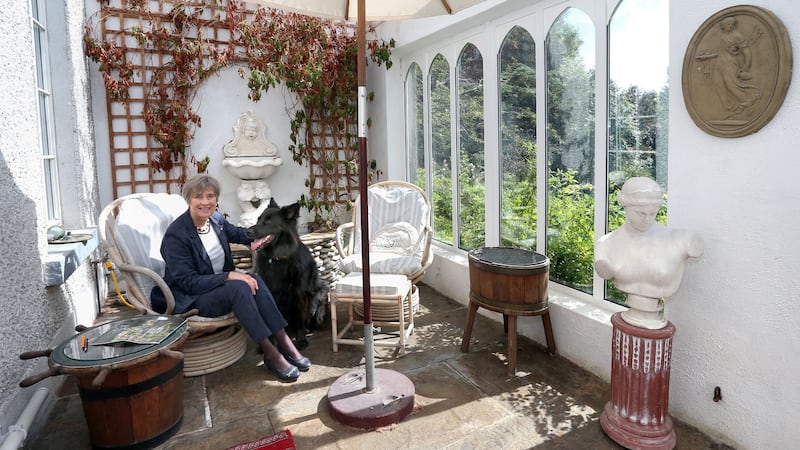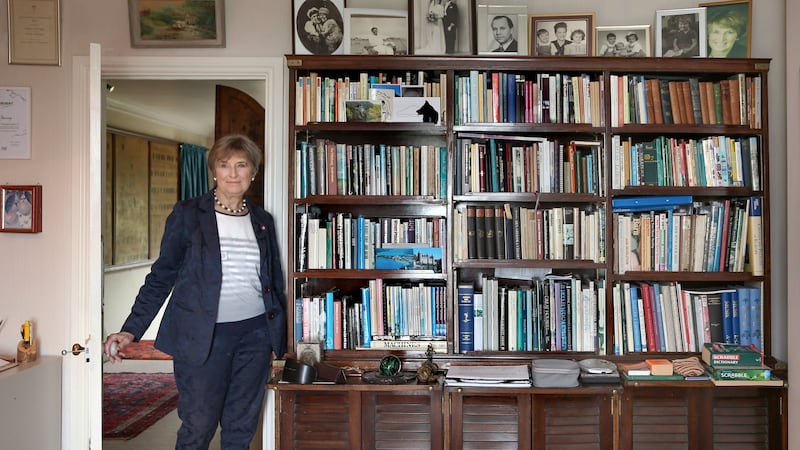When her father died very shortly after her birth, Swedish writer Ann Henning Jocelyn, along with her mother and two older siblings, went to live with grandparents on the Norwegian-Swedish border.
They spent the following years there, living an idyllic life in a beautiful, remote village overlooking a lake. All was perfect but, after she turned six, Ann’s security was shattered, when her grandmother, a youthful woman in her 50s, died, suddenly, of an aneurysm.
Within weeks her grandfather, who suffered with a heart condition and was unable to cope with his wife's death, had also passed away. The traumatised surviving family moved to Gothenburg, where Ann felt completely uprooted. That sense of rootlessness would stay with her for the following 28 years until, in 1982, she came to visit Doonreagan, in Cashel, Co Galway.
The introduction to Cashel might never have happened, but for a fortuitously-timed phone call. For a spell, Ann had worked in London's World Trade Centre as a linguist. When she left to pursue a career as a translator, she remembered Robert Jocelyn, an Irishman who worked with an insurance company in that same building.
When she wanted to insure her new bicycle after her previous one had been stolen, she called the World Trade Centre switchboard and asked to be put through to him. Robert was no longer based in the building, but just happened to be at a meeting there on the day she called. She was put through. She asked if he might be interested in insuring her new bike. He was a little taken aback at her call. He didn’t really insure bicycles, he explained.
“Well, what do you insure?” asked the curious Ann.
“Recently I’ve been dealing with some North Sea oil rigs and a space satellite!” Robert replied.
They arranged to meet to discuss her bicycle’s insurance requirements. A friendship developed, which was to prove useful when Ann was commissioned to write her first book.
"I was in my early 30s, having a successful career as a literary translator. I was working in film and theatre and translating the work of very good novelists like Kazuo Ishiguro. I liked London well enough, but when I was writing my book I wanted to go somewhere free of distractions. Robert had a house in Connemara that wasn't being used."
In August of that year, Ann arrived at Doonreagan and came to Doon House, Robert's house at the base of Cashel Hill overlooking Bertraghboy Bay. She felt as though she had come home.
Childhood home
“The house and setting are so similar to my childhood home. What I’d experienced aged six was very painful. I never found a place after that where I didn’t feel displaced. And then, when I came here, I just felt at home.”
Thirty-six years later Ann is still at Doonreagan, still living at Doon House. She is married to Robert.

“We joke that he had to marry me, because he couldn’t find any way to get me out of the house!”
In the early days living at Doonreagan, Ann felt an extreme connection to the place.
"I would get homesick even if I went shopping in Galway. On the few occasions I went to see family in Sweden, I couldn't wait to get home. It was difficult to be away. Doonreagan meant so much to me."
Ann and Robert went on to have a son, Shane, who now lives in London.
“Doon House is in quite an isolated setting, so at his age London is a place of opportunity for Shane to be. Of course, changes with WiFi and mobile phones and all that make it possible to work from home now, which I do.”
Ann works as a novelist, playwright and translator. If she’s lucky enough to be able to work from home, she has managed, also, to bring some of her and Robert’s social life to their own doorstep. They have a cottage on the land and they’ve converted the stone-built stables into accommodation.
An unusual discovery has brought Doonreagan to wider attention and led to Ann and Robert hosting conferences on Poet Laureate Ted Hughes’ connection to Doon House.

"A few years ago we were approached by two biographers who had discovered that Ted and his partner Assia Wevill came here after Sylvia Plath's death. They lived incognito as Mr and Mrs Hughes. Ted's daughter Frieda, who was six at the time, went to the local school.
“When his letters were published it was discovered that he looks back to the months he spent here as a period of great breakthrough, personally and professionally. He wrote to his son Nicholas when he was dying, that the greatest mistake of his life was to leave the place. What he achieved here, he thought, he would be able to take with him when he had to leave, but that proved impossible.”
If Ted Hughes didn't manage to take the 'essence' of the place with him, Ann is more comfortable coming and going to and from Doonreagan these days.
“I’m not dependent on the place the way I used to be. I take that sense of security and belonging with me wherever I go, because at Doonreagan I have regrown the roots I had lost as a child.”












